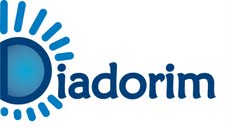Artificial intelligence and the new frontiers of linguistic cartography
DOI:
https://doi.org/10.18764/2595-9549v8n16e26166Keywords:
Dialectology, linguistic corpus, data miningAbstract
Artificial intelligence (AI) is opening up new horizons for linguistic cartography, enabling a deeper and more accurate analysis of the geographic distribution and variation of languages. This article explores the main trends and challenges of applying AI in this field, highlighting its potential to revolutionize how we study and understand human language. We present examples of research projects that use AI techniques to analyze large text corpora, identify variation patterns, and create interactive maps. Finally, we discuss future research perspectives, exploring how AI can contribute to the creation of more sophisticated linguistic analysis tools, the preservation of linguistic diversity, and the development of technologies for intercultural communication.
Downloads
References
BIBER, D. et al. Longman grammar of spoken and written English. Longman, 1994.
BLOMMAERT, J.; RAMPTON, B. Language and superdiversity. Diversities, Paris, v. 13, n. 2, p. 1-21, 2011.
CASTILHO, Ataliba Teixeira de. Nova gramática do português brasileiro. São Paulo: Contexto, 2010.
CROOM, C. Cartography: A Basic Introduction. London: George Philip, 1999.
GOMES DE CARVALHO, M. E. Cartografia Linguística: Uma Introdução. São Paulo: Cortez Editora, 2008.
GOOSKENS, C. Atlas of language variation in Europe. Oxford University Press, 2007.
ISQUERDO, Aparecida Negri. As ciências do léxico: lexicologia, lexicografia, terminologia: volume III. UFMS, 2007.
JURAFSKY, Daniel; MARTIN, James H. Speech and Language Processing. 3. ed. Pearson, 2023.
MATTOS E SILVA, Rosa Virgínia. Para uma história do português do Brasil. São Paulo: Contexto, 2001.
MORETTI, Franco. Distant reading. Londres: Verso, 2013.
MANNING, Christopher D.; SCHÜTZE, Hinrich. Foundations of statistical language modeling. MIT press, 1999.
Teses e Dissertações:
SILVA, M. G. A cartografia linguística na era digital: novas perspectivas para o estudo da variação linguística. Tese de doutorado, Universidade de São Paulo. 2015.
Artigos em periódicos (eletrônicos):
BENDER, Emily et al. On the Dangers of Stochastic Parrots: Can Language Models Be Too Big?. arXiv preprint arXiv:2201.07285, 2022.
BIRD, Graham et al. OpenAI GPT-3: Language Models That Can Generate Text, Translate Languages, Write Different Kinds of Creative Content, and Answer Your Questions in an Informative Way.. arXiv preprint arXiv:2201.07285, 2022.
VASWANI, Ashish et al. Attention is all you need.. arXiv preprint arXiv:1706.03762, 2017.
Sites:
IBM. Inteligência Artificial. Disponível em: https://www.ibm.com/br-pt/topics/artificial-intelligence. Acesso em: 08 jul. 2024.
SOCIEDADE BRASILEIRA DE COMPUTAÇÃO. Inteligência Artificial. Disponível em: https://sbc.org.br/2-uncategorised/94-inteligencia-artificial. Acesso em: 08 jul. 2024.
Ferramentas e Plataformas:
Gephi. Gephi Consortium. Gephi: Open Graph Viz Platform. Versão 0.10.1. Disponível em: https://gephi.org/. Acesso em: 10 jul. 2024.
Google Colaboratory. Google. Google Colaboratory. Disponível em: https://colab.research.google.com/. Acesso em: 10 jul. 2024.
NLTK (Natural Language Toolkit). BIRD, S.; KLEIN, E.; LOPER, E. NLTK: the natural language toolkit. Disponível em: https://www.nltk.org/. Acesso em: 10 jul. 2024.
Python. PYTHON SOFTWARE FOUNDATION. Python Programming Language. Versão 3.12. Disponível em: https://www.python.org/. Acesso em: 10 jul. 2024.
QGIS (Quantum GIS). QGIS DEVELOPMENT TEAM. QGIS Geographic Information System. Versão 3.36. Disponível em: https://www.qgis.org/. Acesso em: 10 jul. 2024.
R. R CORE TEAM. R: A language and environment for statistical computing. Versão 4.3.1. R Foundation for Statistical Computing, Vienna, Austria. Disponível em: https://www.R-project.org/. Acesso em: 10 jul. 2024.
scikit-learn. PEDREGOSA, F. et al. Scikit-learn: Machine Learning in Python. Journal of Machine Learning Research, v. 12, p. 2825-2830, 2011. Disponível em: https://scikit-learn.org/. Acesso em: 10 jul. 2024.
spaCy. HONNIBAL, M.; MONTANI, I.; VAN LANDEGHEM, S.; BOYD, A. spaCy: Industrial-strength Natural Language Processing in Python. Versão 3.7. Disponível em: https://spacy.io/. Acesso em: 10 jul. 2024.
Downloads
Published
How to Cite
Issue
Section
License

This work is licensed under a Creative Commons Attribution 4.0 International License.
A Infinitum: Revista Multidisciplinar está licenciada com uma Licença Creative Commons Atribuição 4.0 Internacional.









